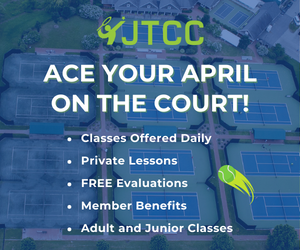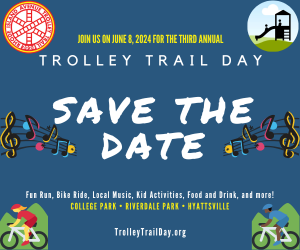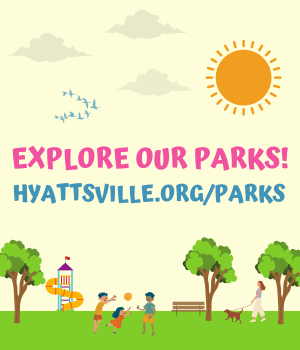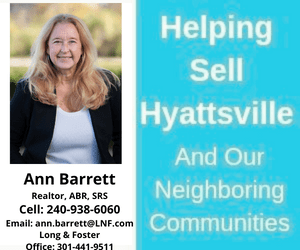Dear Miss Floribunda,
I enjoyed the Hyattsville Horticultural Society seed sale and made my usual purchases of my favorite vegetable and flower seeds. Then I talked to some people at the information tables and learned that insecticide-free “butterfly gardens” can help the butterflies as they migrate long distances. I also learned a little about bees and that they also need safe havens. The idea of having a kind of hostel for Very Important Pollinators really appeals to me.
Can you give a few more pointers about creating such gardens? At the urging of someone I suspect might have been you, I bought some seeds for white cosmos, guessing that white attracts pollinators. What other flower characteristics appeal to butterflies and/or bees?
Cosmospolitan on Powhatan Street
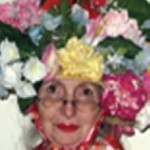 Dear Cosmospolitan,
Dear Cosmospolitan,
If you do plan to make this a mission, you could join the National Butterfly Association and have your garden certified as a butterfly haven. There are three requirements: 1) your garden must be pesticide free; 2) you include at least three plant species that sustain native caterpillars; and 3) you also include three flowering plant species that provide nectar to native butterflies. In general, whatever you do to help butterflies also helps bees and other beneficial insects.
I do think I remember you and may have steered you towards white cosmos because they are a tried and true butterfly favorite. White does attract butterflies and bees, but so do yellow, purple and blue. Uncomplicated, flat flowers (like cosmos flowers) are easy to land on, and also make access to pollen and nectar simple. Butterflies and bees can’t see the red that attracts hummingbirds, but they can see yellow centers of simple, open-hearted flowers. An exception is the red monarda, or bee balm, which refracts light so the flowers look blue to bees. Other flowers that butterflies love are bachelor buttons, zinnias, daisies, hollyhocks and foxgloves, and many native plants such as goldenrod, joe pye weed and milkweed. Fragrant herbs are a strong attractant, so it might be good to add white clover and low-growing herbs to your lawn. I can actually recall when fragrant white clover lawns were popular! If you have an herb garden, go heavy on lavender, sage, dill and fennel. To extend the pollen season for your beneficial visitors, plant early blooming spring crocuses and fall-blooming asters.
Include a bird bath in your garden, and consider adding pans of water on the ground. If you want to help bees nest (and can be careful where you step!), you can have a sandy area in a corner of your yard. My consultant on bees, Hannah Honeywell, suggests also keeping an uncultivated muddy spot for other species of bees or just letting them use the mud around your birdbath. You can put up butterfly houses and create bee hotels using wooden frames divided into rooms filled with twigs and other natural materials. Cover the frame with mesh; just as people will steal towels from hotel rooms, some unscrupulous bees will abscond with twigs. Unlike butterflies, bees don’t migrate long distances. Honey bees stay within a five-mile radius of their hives and over-winter in their hives. Most native species will be happy to spend the winter in hollow plant stems in your garden. In contrast, butterflies are cold-blooded, and those that are not in larval stage in winter have to fly south. The swallowtail butterfly’s pupae can survive most winters; the red admiral, the cloudless sulfur, the buckeye and the painted lady go as far south as the Carolinas. Eastern monarchs migrate to a refuge in Mexico.These international travelers need many gardens during their migrations, both north and south.
To get a head start on planting from seed, you can find native plants in pots at most nurseries come spring. Perhaps the best thing about native plants is that they not only provide nectar, but they also provide shelter and food for caterpillars. Your best selection — especially of the milkweed that is essential to monarch butterflies — will be at Chesapeake Natives, Inc. (chesapeakenatives.org) on Rosaryville Road in Upper Marlboro, which is open by appointment from early April through late October on Tuesdays, Thursdays and Saturdays from 9:30 a.m. until 1 p.m. The nursery’s spring sales are from 10 a.m. to 2 p.m. on April 9, April 30 (best time to find milkweed) and May 28. Some of our Hyattsville Horticultural Society (HHS) members, including Wendy Wildflower and Dave Greenfingers, volunteer there and would love to see you. While you can look online for other sources, don’t forget that the Hyattsville Elementary School PTA’s native plant sale is in May. We’ll keep you posted.



